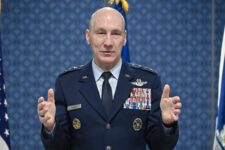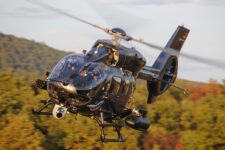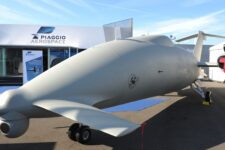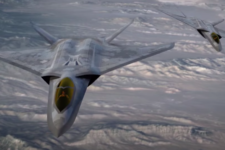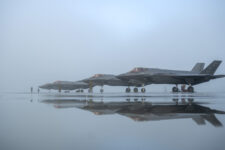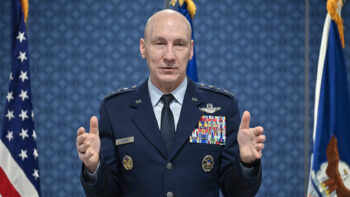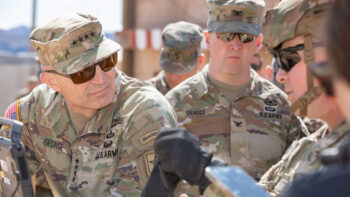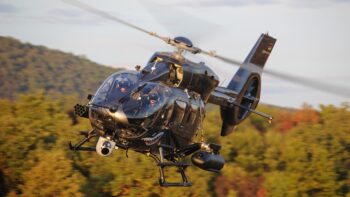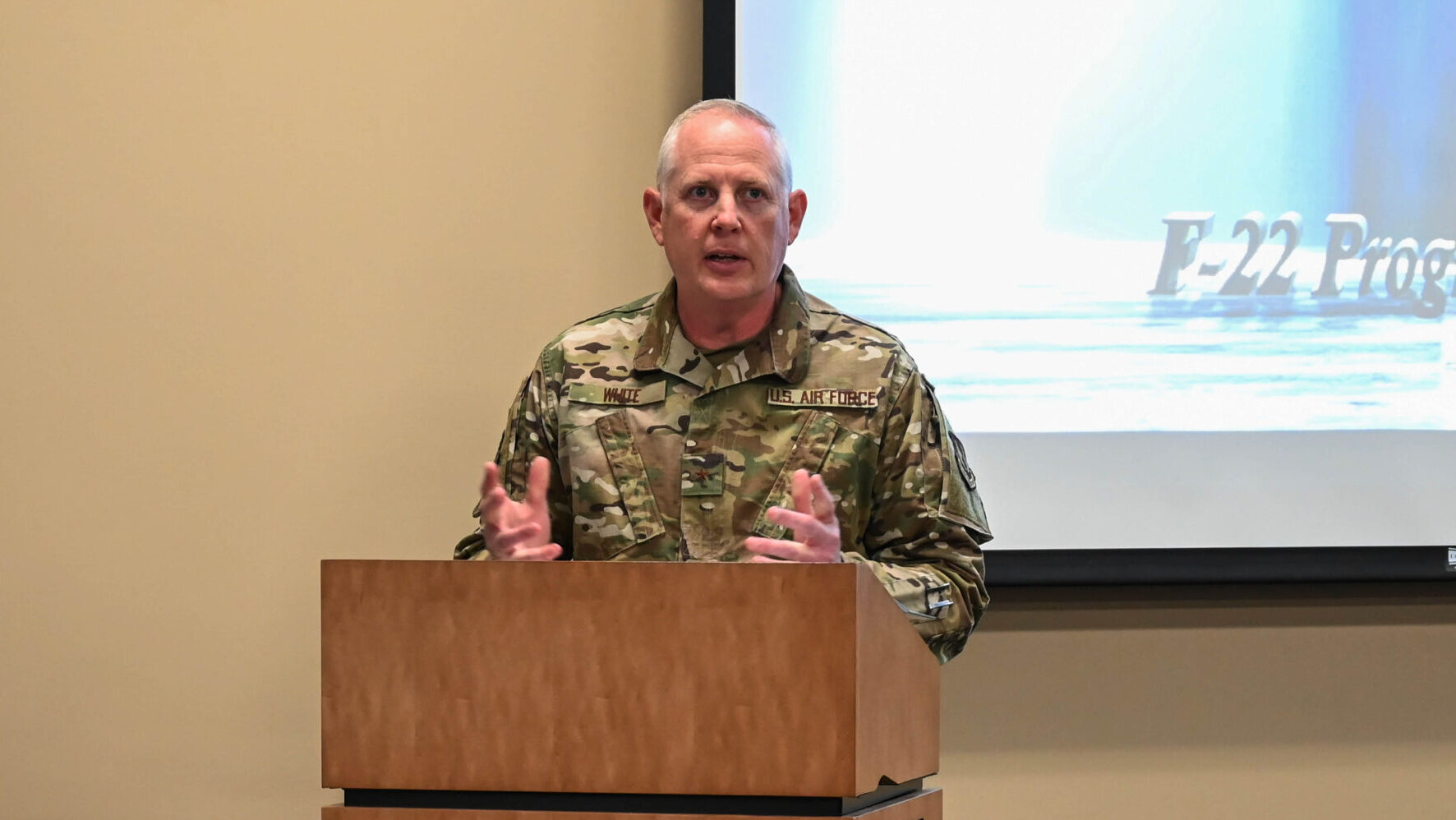
Brig. Gen. Dale White speaks at the F-22 Program Office Transfer Ceremony, Sept. 29, 2020, at Hill Air Force Base, Utah. (U.S. Air Force photo by Cynthia Griggs)
DAYTON, Ohio — A senior Air Force official recently touted the service’s success in dipping into the “non-traditional” vendor pool to think more creatively about what its Next Generation Air Dominance (NGAD) fighter, and associated systems, could do.
“We have proven a path that allows us to do that and we’ve had some pretty tremendous success up to this point bringing [on]… some non-traditionals,” said Brig. Gen. Dale White, program executive officer for fighters and advanced aircraft, during a roundtable with reporters at the Life Cycle Industry Days conference here on Tuesday. “Because I’ve found that in some cases, these non-traditionals become thought leaders.”
“So we have had success on an order of about… a dozen right now, where we have started to bring in some of these smaller non-traditionals,” he added.
White explained there are two sides of the next-gen fighter’s supply chain: producing specific parts like “brackets, tubing [and] wiring,” and “making a capability that would be integrated into the platform.”
White said that most of the progress has been on finding vendors for new capabilities, whereas work is underway on the supply chain for parts that is largely handled by more traditional primes and their relationships with subcontractors.
“On the capability side, I think we’re making tremendous progress. We’re opening the door to vendors that could come in,” he said.
Among the many barriers to entry for new vendors, usually a chief one is classification. “We are going to tremendous lengths to make sure that we maintain a posture that we understand what requires classification and what does not,” White said.
However, he cautioned that “I won’t say we’re pushing the envelope from a clearance perspective, but we’re being more thoughtful and making sure we make sound decisions because as everyone knows, once it gets into that classification path, getting it out becomes much, much more difficult.”
CCAs For Days
White also pointed to success underpinning the vendor pool for the Air Force’s collaborative combat aircraft (CCA) program, where the service’s acquisition chief previously said as many as 20-30 companies could be in the running to build the drone wingmen.
White said officials “have a firm grasp on what the requirements are,” hinting that more detail would be available soon.
“We’re well down the path on that. I won’t go into specific details of where we’re at on the strategy and things of that nature. I will tell you, I think there’ll be more information coming out in probably a month or so on that.”
White said a “larger discussion” on plans for the Navy and Air Force to make their respective CCAs interoperable will be held at the upcoming Air & Space Forces Association conference next month, teasing that “four specific areas” of collaboration will be detailed at the summit.
At the AFA conference this past spring, Air Force Secretary Frank Kendall said the service is planning an initial order of around 1,000 CCAs: two per 200 NGAD fighters, and two for 300 F-35s.
Coupled with the service’s fiscal 2024 budget request that seeks $392 million to launch a formal CCA program, Congress has since expressed keen interest in the effort, with some lawmakers pushing to accelerate their fielding.
“Right now we feel very comfortable with where we’re at and the partnership we have with Congress on this particular program is, I mean, it’s phenomenal,” said White.
As part of the markup process for the fiscal 2024 defense policy bill, House authorizers would mandate three categories of the drones — expendable, attritable and exquisite, with price ceilings included for each.
While stating he would “double down” on the service’s partnership with Congress, particularly the House Armed Services Committee, White observed the provisions lay out “a spectrum of operations, if you will, of what CCA can do. I wouldn’t say that it’s good or bad. I would say that we need to work diligently with our partners on the Hill to make sure we understand what the definition of each one of those categories are.
“I think as we continue constant refinement, we continue to learn, we’ll have a better idea of what each one of those categories mean. And then we’ll continue our relationship and communication with our partners on the Hill to address them,” he said.
Trump administration inherits Air Force funding hurdle: 2025 preview
With Elon Musk and Vivek Ramaswamy set to co-lead a commission that could recommend cuts to the Pentagon, many previously unthinkable options may be on the table for the US Air Force as the second Trump administration takes over Washington.
